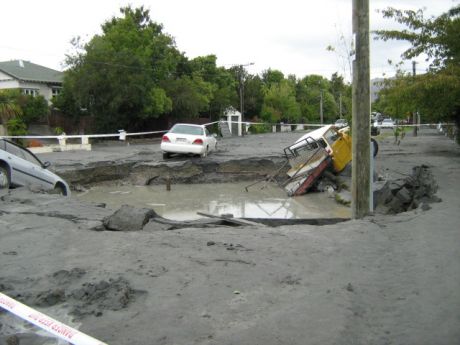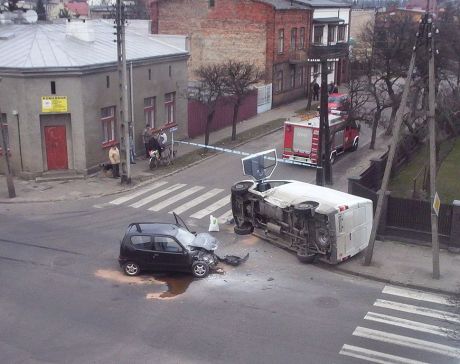
The shortcomings of today's fire testing systems for buildings have opened the door to more flexible performance-based solutions. An EU initiative is developing methodologies and tools to support this shift.

An EU study examined behavioural and communication issues surrounding major epidemic outbreaks. Tools have been developed for policy makers for effective communication about response measures such as vaccination.

High-tech sensors are being designed to capture much better fingerprints faster, enhancing security and speeding it up – particularly at border crossings.

European training and disaster mitigation is equipping Palestinians to manage threatening seismic events if and when they occur.

Scientists collaborated with technology developers to develop a portable unit that detects and analyses airborne biological agents. This should facilitate a rapid and life-saving response in the case of bioterrorism or accidental release of deadly pathogens.

Civil emergencies always involve many separate agencies, and require that they communicate effectively. An EU initiative designed an innovative and secure web-based platform that seamlessly interconnects police, fire fighters and other first responders.

There is a crucial need to step up efforts and raise the level of protection for critical infrastructure (CI) against the growing threat from electromagnetic (EM) attacks. An EU initiative is exploring such threats and their possible effects in order to deliver appropriate mitigation techniques.

Assessing the impact of security research from different perspectives will ensure that the security industry is producing products and services in line with society's actual needs.

As extreme weather events are becoming more frequent better management of transport network and flow is needed. Building understanding of events and the ways in which different transport modes can adjust to these events is critical for decision-makers, operators and network users.

Researchers have tested an advanced early warning system against the outbreak of epidemics in rural China. Early detection is crucial for limiting the spread and impact of such epidemics.

Prior EU-funded projects have identified Earth observation (EO) services that support intelligence, early warning and crisis management operations to keep citizens as safe as possible. An EU initiative is developing and enhancing these services in order to become fully operational.

An EU study developed procedures for evaluating vehicle pedestrian-detection safety systems. The project integrated existing protocols with innovative measures, also supplying data needed for decision-making algorithms and injury evaluation.

A European project is developing a platform to assess threats and vulnerabilities affecting Air Traffic Management (ATM) and to manage the European network. For this purpose prototypes will be developed and validated in an ATM environment.

Crime scene (CS) techniques for various forensic identification scenarios need to be optimised and harmonised for widespread application by European scientific police units. An EU initiative introduced a set of novel CS methods, protocols and tools that deliver accurate and trustworthy results anywhere in Europe.

An EU group is developing a system to manage crisis evacuations of public spaces. Having created a network of sensors and crowd behaviour algorithms, further development and testing will yield decision-making tools that relay the best exit paths.

An EU team is examining civil rights related to surveillance, focusing on accountability and privacy. The research has started on a framework and management tool, and prepared for upcoming demonstrations.

Crime scene (CS) techniques for various forensic identification scenarios need to be optimised and harmonised for widespread application by European scientific police units. An EU initiative introduced a set of novel CS methods, protocols and tools that deliver accurate and trustworthy results anywhere in Europe.

An EU team is developing an information system enabling public involvement in emergency response. To date, the team has identified users and established requirements, leading to design and testing of prototype crowd sourcing tools.

With Europe aiming for zero road deaths, road safety research can play a key role in this ambitious goal. An EU initiative delivered a roadmap that sets clear priorities for road safety research, and helped to improve networking among all relevant stakeholders.

New highly flexible production methodologies and processes to customize safety shoes, work wear and sportswear for elderly, diabetic, overweight and lower able people. Development of new integrated sensors and software systems able to monitor interactively health parameters at work and during sports activities

An EU team is developing an interface for the various communication technologies of Europe's many crisis response services. The proposed system allows interoperability, and the team has so far produced a prototype architecture.

The aerospace industry is actively pursuing research to decrease operating costs while increasing safety and sustainability. Novel non-contact structural health monitoring based on embedded strain-sensitive magnetic wires addresses all issues cost effectively.

Mathematical models that predict the structural stability of buildings during earthquakes are critical to better designs and earthquake management. New methods to more accurately evaluate inherent uncertainties in models will aid engineers and policymakers.

New security solutions are under development to minimise or eliminate malicious threats to on-board ship reporting systems.

Natural disasters and pandemics call for the involvement of local communities and companies in cooperation with response teams. An EU initiative has developed an online tool to exchange knowledge and best practices in crisis communication and to enhance public preparedness and response.
























